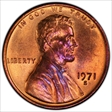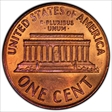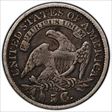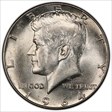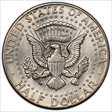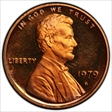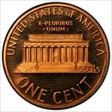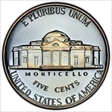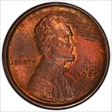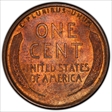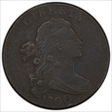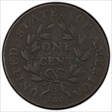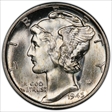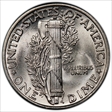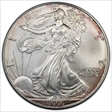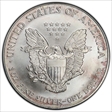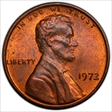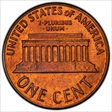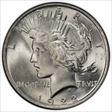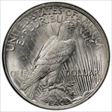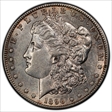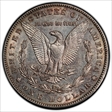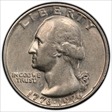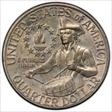Cosmopolitan 的展示图片库
The assassination of President John F. Kennedy on November 22, 1963, marked one of the most tragic and shocking moments in American history. As the nation grieved the loss of its charismatic leader, efforts to memorialize Kennedy began almost immediately. Among these tributes was the decision to feature his portrait on a U.S. coin—a lasting symbol of his legacy. The Selection of the Kennedy Half Dollar Initially, there were discussions about placing Kennedy’s image on the U.S. quarter, replacing George Washington’s portrait. However, Jacqueline Kennedy, the late president’s widow, requested that Washington remain on the quarter, as his likeness had been a cornerstone of American coinage since 1932. The next logical choice was the half dollar, which at the time featured Benjamin Franklin, a design introduced in 1948. Legislative Hurdles and Rapid Production The Coinage Act of 1890 mandated that designs on circulating coins remain unchanged for at least 25 years, unless Congress approved an exception. Since the Franklin Half Dollar had only been in circulation for 15 years, Congress needed to pass new legislation to replace it with the Kennedy design. The urgency of this tribute spurred swift bipartisan action, and the law was amended to allow the redesign. The U.S. Mint worked quickly to prepare the new coin. Sculptors Gilroy Roberts and Frank Gasparro, who had created the designs for Kennedy’s Presidential Medal, adapted their work for the half dollar. The coin design featured Kennedy’s left-facing profile on the obverse and the presidential seal on the reverse. By February 1964, the Philadelphia Mint began striking the new coins, and the Denver Mint followed shortly thereafter. Material Composition and Collectibility The 1964 Kennedy Half Dollars were composed of 90% silver, making them highly valued not only as a tribute but also for their silver content. However, due to rising silver prices, the U.S. Mint transitioned to a 40% silver composition for circulation strikes from 1965 to 1970. After 1970, silver was removed entirely from the coins minted for circulation, making the earlier issues particularly sought after by collectors. Historical Context and Impact The Kennedy Half Dollar quickly became one of the most popular coins in U.S. history. It served not just as currency but as a token of national mourning and remembrance. Banks across the country reported high demand for the coin, with many Americans keeping the half dollars as keepsakes rather than spending them. This led to widespread hoarding, and the coin soon became scarce in circulation—a testament to Kennedy’s enduring legacy. The Kennedy Half Dollar remains in production today, though its role as a circulating coin has diminished due to its size and the public’s preference for smaller denominations. Nevertheless, it continues to symbolize the profound impact of President Kennedy’s life and the enduring respect for his memory.
The assassination of President John F. Kennedy on November 22, 1963, marked one of the most tragic and shocking moments in American history. As the nation grieved the loss of its charismatic leader, efforts to memorialize Kennedy began almost immediately. Among these tributes was the decision to feature his portrait on a U.S. coin—a lasting symbol of his legacy. The Selection of the Kennedy Half Dollar Initially, there were discussions about placing Kennedy’s image on the U.S. quarter, replacing George Washington’s portrait. However, Jacqueline Kennedy, the late president’s widow, requested that Washington remain on the quarter, as his likeness had been a cornerstone of American coinage since 1932. The next logical choice was the half dollar, which at the time featured Benjamin Franklin, a design introduced in 1948. Legislative Hurdles and Rapid Production The Coinage Act of 1890 mandated that designs on circulating coins remain unchanged for at least 25 years, unless Congress approved an exception. Since the Franklin Half Dollar had only been in circulation for 15 years, Congress needed to pass new legislation to replace it with the Kennedy design. The urgency of this tribute spurred swift bipartisan action, and the law was amended to allow the redesign. The U.S. Mint worked quickly to prepare the new coin. Sculptors Gilroy Roberts and Frank Gasparro, who had created the designs for Kennedy’s Presidential Medal, adapted their work for the half dollar. The coin design featured Kennedy’s left-facing profile on the obverse and the presidential seal on the reverse. By February 1964, the Philadelphia Mint began striking the new coins, and the Denver Mint followed shortly thereafter. Material Composition and Collectibility The 1964 Kennedy Half Dollars were composed of 90% silver, making them highly valued not only as a tribute but also for their silver content. However, due to rising silver prices, the U.S. Mint transitioned to a 40% silver composition for circulation strikes from 1965 to 1970. After 1970, silver was removed entirely from the coins minted for circulation, making the earlier issues particularly sought after by collectors. Historical Context and Impact The Kennedy Half Dollar quickly became one of the most popular coins in U.S. history. It served not just as currency but as a token of national mourning and remembrance. Banks across the country reported high demand for the coin, with many Americans keeping the half dollars as keepsakes rather than spending them. This led to widespread hoarding, and the coin soon became scarce in circulation—a testament to Kennedy’s enduring legacy. The Kennedy Half Dollar remains in production today, though its role as a circulating coin has diminished due to its size and the public’s preference for smaller denominations. Nevertheless, it continues to symbolize the profound impact of President Kennedy’s life and the enduring respect for his memory.
The assassination of President John F. Kennedy on November 22, 1963, marked one of the most tragic and shocking moments in American history. As the nation grieved the loss of its charismatic leader, efforts to memorialize Kennedy began almost immediately. Among these tributes was the decision to feature his portrait on a U.S. coin—a lasting symbol of his legacy. The Selection of the Kennedy Half Dollar Initially, there were discussions about placing Kennedy’s image on the U.S. quarter, replacing George Washington’s portrait. However, Jacqueline Kennedy, the late president’s widow, requested that Washington remain on the quarter, as his likeness had been a cornerstone of American coinage since 1932. The next logical choice was the half dollar, which at the time featured Benjamin Franklin, a design introduced in 1948. Legislative Hurdles and Rapid Production The Coinage Act of 1890 mandated that designs on circulating coins remain unchanged for at least 25 years, unless Congress approved an exception. Since the Franklin Half Dollar had only been in circulation for 15 years, Congress needed to pass new legislation to replace it with the Kennedy design. The urgency of this tribute spurred swift bipartisan action, and the law was amended to allow the redesign. The U.S. Mint worked quickly to prepare the new coin. Sculptors Gilroy Roberts and Frank Gasparro, who had created the designs for Kennedy’s Presidential Medal, adapted their work for the half dollar. The coin design featured Kennedy’s left-facing profile on the obverse and the presidential seal on the reverse. By February 1964, the Philadelphia Mint began striking the new coins, and the Denver Mint followed shortly thereafter. Material Composition and Collectibility The 1964 Kennedy Half Dollars were composed of 90% silver, making them highly valued not only as a tribute but also for their silver content. However, due to rising silver prices, the U.S. Mint transitioned to a 40% silver composition for circulation strikes from 1965 to 1970. After 1970, silver was removed entirely from the coins minted for circulation, making the earlier issues particularly sought after by collectors. Historical Context and Impact The Kennedy Half Dollar quickly became one of the most popular coins in U.S. history. It served not just as currency but as a token of national mourning and remembrance. Banks across the country reported high demand for the coin, with many Americans keeping the half dollars as keepsakes rather than spending them. This led to widespread hoarding, and the coin soon became scarce in circulation—a testament to Kennedy’s enduring legacy. The Kennedy Half Dollar remains in production today, though its role as a circulating coin has diminished due to its size and the public’s preference for smaller denominations. Nevertheless, it continues to symbolize the profound impact of President Kennedy’s life and the enduring respect for his memory.
Look at this beauty, she is so gorgeous! Almost doubling on every single letter on obverse and reverse, upon closer observation you will love the doubling on the date as well, & the rim is telling us another incredible story yet, the toning is out of this world!
Look at this beauty, she is so gorgeous! Almost doubling on every single letter on obverse and reverse, upon closer observation you will love the doubling on the date as well, & the rim is telling us another incredible story yet, the toning is out of this world!
Look at this beauty, she is so gorgeous! Almost doubling on every single letter on obverse and reverse, upon closer observation you will love the doubling on the date as well, & the rim is telling us another incredible story yet, the toning is out of this world!
The 1944-S Five Centavos is a historical coin from the United States’ era of administration over the Philippines. Here’s a detailed breakdown and history: Background and History • Period: During the U.S. occupation of the Philippines (1898–1946), coins were minted specifically for use in the islands. These coins were struck in the U.S. but bore Filipino designs and denominations. • Mint: The “S” mint mark signifies that this coin was minted at the San Francisco Mint. • Composition: The 1944-S Five Centavos is made of 75% copper and 25% nickel. • Design: • Obverse: Features a young Filipino man seated beside an anvil, holding a hammer, with Mount Mayon in the background. Reverse: Displays the United States shield and eagle above, with the inscription “United States of America” and the year of minting, 1944. This coin was part of a series issued to facilitate trade and daily commerce in the Philippines. It also symbolizes the strong ties between the U.S. and the Philippines during World War II. Historical Significance 1. World War II Context: • 1944 was during the height of World War II, and the Philippines was occupied by Japanese forces. Despite this, the U.S. continued to mint coins for the Philippines in preparation for the country’s liberation. • These coins were likely used during the post-liberation period when the Philippines was rebuilding under U.S. administration. 2. Transition Period: • This coin was one of the last minted before the Philippines gained independence in 1946. It represents the transitional period when the country was moving toward self-governance while still under U.S. influence. My Coin My 1944-S Five Centavos is graded N1 (No Grade) by PCGS with certification number 42557853 and PCGS number 90232. • Population of 0 in this grade: This means that my coin is uniquely classified in the PCGS database, possibly due to its condition, uniqueness, or features that do not conform to standard grading but make it noteworthy. • PCGS Registry: my coin holds a special position in the PCGS Set Registry, adding to its collectible appeal. Collectibility and Value • Scarcity: The combination of wartime minting, historical significance, and its unique grading status makes my coin highly collectible. • Market Demand: Collectors of U.S.-Philippine coins often seek coins with historical ties to World War II and transitional periods. • Potential Value: While its precise value depends on demand and auction results, coins with unique population grades can command premiums from collectors.
The 1944-S Five Centavos is a historical coin from the United States’ era of administration over the Philippines. Here’s a detailed breakdown and history: Background and History • Period: During the U.S. occupation of the Philippines (1898–1946), coins were minted specifically for use in the islands. These coins were struck in the U.S. but bore Filipino designs and denominations. • Mint: The “S” mint mark signifies that this coin was minted at the San Francisco Mint. • Composition: The 1944-S Five Centavos is made of 75% copper and 25% nickel. • Design: • Obverse: Features a young Filipino man seated beside an anvil, holding a hammer, with Mount Mayon in the background. Reverse: Displays the United States shield and eagle above, with the inscription “United States of America” and the year of minting, 1944. This coin was part of a series issued to facilitate trade and daily commerce in the Philippines. It also symbolizes the strong ties between the U.S. and the Philippines during World War II. Historical Significance 1. World War II Context: • 1944 was during the height of World War II, and the Philippines was occupied by Japanese forces. Despite this, the U.S. continued to mint coins for the Philippines in preparation for the country’s liberation. • These coins were likely used during the post-liberation period when the Philippines was rebuilding under U.S. administration. 2. Transition Period: • This coin was one of the last minted before the Philippines gained independence in 1946. It represents the transitional period when the country was moving toward self-governance while still under U.S. influence. My Coin My 1944-S Five Centavos is graded N1 (No Grade) by PCGS with certification number 42557853 and PCGS number 90232. • Population of 0 in this grade: This means that my coin is uniquely classified in the PCGS database, possibly due to its condition, uniqueness, or features that do not conform to standard grading but make it noteworthy. • PCGS Registry: my coin holds a special position in the PCGS Set Registry, adding to its collectible appeal. Collectibility and Value • Scarcity: The combination of wartime minting, historical significance, and its unique grading status makes my coin highly collectible. • Market Demand: Collectors of U.S.-Philippine coins often seek coins with historical ties to World War II and transitional periods. • Potential Value: While its precise value depends on demand and auction results, coins with unique population grades can command premiums from collectors.
The 1944-S Five Centavos is a historical coin from the United States’ era of administration over the Philippines. Here’s a detailed breakdown and history: Background and History • Period: During the U.S. occupation of the Philippines (1898–1946), coins were minted specifically for use in the islands. These coins were struck in the U.S. but bore Filipino designs and denominations. • Mint: The “S” mint mark signifies that this coin was minted at the San Francisco Mint. • Composition: The 1944-S Five Centavos is made of 75% copper and 25% nickel. • Design: • Obverse: Features a young Filipino man seated beside an anvil, holding a hammer, with Mount Mayon in the background. Reverse: Displays the United States shield and eagle above, with the inscription “United States of America” and the year of minting, 1944. This coin was part of a series issued to facilitate trade and daily commerce in the Philippines. It also symbolizes the strong ties between the U.S. and the Philippines during World War II. Historical Significance 1. World War II Context: • 1944 was during the height of World War II, and the Philippines was occupied by Japanese forces. Despite this, the U.S. continued to mint coins for the Philippines in preparation for the country’s liberation. • These coins were likely used during the post-liberation period when the Philippines was rebuilding under U.S. administration. 2. Transition Period: • This coin was one of the last minted before the Philippines gained independence in 1946. It represents the transitional period when the country was moving toward self-governance while still under U.S. influence. My Coin My 1944-S Five Centavos is graded N1 (No Grade) by PCGS with certification number 42557853 and PCGS number 90232. • Population of 0 in this grade: This means that my coin is uniquely classified in the PCGS database, possibly due to its condition, uniqueness, or features that do not conform to standard grading but make it noteworthy. • PCGS Registry: my coin holds a special position in the PCGS Set Registry, adding to its collectible appeal. Collectibility and Value • Scarcity: The combination of wartime minting, historical significance, and its unique grading status makes my coin highly collectible. • Market Demand: Collectors of U.S.-Philippine coins often seek coins with historical ties to World War II and transitional periods. • Potential Value: While its precise value depends on demand and auction results, coins with unique population grades can command premiums from collectors.
Coin Collecting: A Passion for Rarity and History Coin collecting, also known as numismatics, is far more than a hobby for many—it’s a pursuit of history, artistry, and rarity. One exceptional acquisition is the 1 Cent 1800/79 United States Draped Bust Large Cent, Variety S-196, a coin that captures both historical significance and numismatic intrigue. Rarity and Uniqueness The 1800/79 overdate variety represents a fascinating chapter in early American minting. This variety occurred when a die originally prepared for 1799 or 1797 was repurposed for striking 1800 cents, showcasing the resourcefulness of the U.S. Mint during its early years. The S-196 designation, part of the Sheldon Large Cent catalog, narrows the coin to a specific die pair, which adds to its numismatic significance. Though not necessarily unique in ownership, coins from this die pair are scarce and highly sought after. Overdates like this are cherished for their historical context, as they reflect the Mint’s challenges in die production and conservation, making such coins a tangible link to the struggles and resourcefulness of America’s formative years. Grading and Condition The N1BN (Mint State “Brown”) grade indicates a near-pristine coin with minimal imperfections and an even brown patina, typical of well-preserved copper coins. The rich toning is a testament to its careful storage and aging process, with natural chemical reactions producing unique hues. Collectors highly value such toning for its visual appeal and contribution to the coin’s individuality. Design Details • Obverse: Features the iconic Draped Bust design by Robert Scot, with Liberty’s profile framed by flowing hair tied with a ribbon. The overdate feature—where remnants of “79” can be discerned beneath “1800”—is a captivating aspect for collectors. Historical Context The 1800 Draped Bust cent emerged during a period of nation-building under President John Adams and later Thomas Jefferson. Copper cents were vital for everyday transactions, and their designs reflected both artistic aspirations and practical considerations. Overdate varieties were a byproduct of the Mint’s frugality, as dies were expensive to produce and repurposed whenever possible. Conclusion The 1 Cent 1800/79 S-196 is more than a collectible; it is a tangible connection to America’s early history, showcasing the ingenuity and artistry of the nascent U.S. Mint. With its rich patina, overdate feature, and historical context, it represents a pinnacle of numismatic achievement, reflecting the dedication of collectors who seek to preserve the past for future generations.
Coin Collecting: A Passion for Rarity and History Coin collecting, also known as numismatics, is far more than a hobby for many—it’s a pursuit of history, artistry, and rarity. One exceptional acquisition is the 1 Cent 1800/79 United States Draped Bust Large Cent, Variety S-196, a coin that captures both historical significance and numismatic intrigue. Rarity and Uniqueness The 1800/79 overdate variety represents a fascinating chapter in early American minting. This variety occurred when a die originally prepared for 1799 or 1797 was repurposed for striking 1800 cents, showcasing the resourcefulness of the U.S. Mint during its early years. The S-196 designation, part of the Sheldon Large Cent catalog, narrows the coin to a specific die pair, which adds to its numismatic significance. Though not necessarily unique in ownership, coins from this die pair are scarce and highly sought after. Overdates like this are cherished for their historical context, as they reflect the Mint’s challenges in die production and conservation, making such coins a tangible link to the struggles and resourcefulness of America’s formative years. Grading and Condition The N1BN (Mint State “Brown”) grade indicates a near-pristine coin with minimal imperfections and an even brown patina, typical of well-preserved copper coins. The rich toning is a testament to its careful storage and aging process, with natural chemical reactions producing unique hues. Collectors highly value such toning for its visual appeal and contribution to the coin’s individuality. Design Details • Obverse: Features the iconic Draped Bust design by Robert Scot, with Liberty’s profile framed by flowing hair tied with a ribbon. The overdate feature—where remnants of “79” can be discerned beneath “1800”—is a captivating aspect for collectors. Historical Context The 1800 Draped Bust cent emerged during a period of nation-building under President John Adams and later Thomas Jefferson. Copper cents were vital for everyday transactions, and their designs reflected both artistic aspirations and practical considerations. Overdate varieties were a byproduct of the Mint’s frugality, as dies were expensive to produce and repurposed whenever possible. Conclusion The 1 Cent 1800/79 S-196 is more than a collectible; it is a tangible connection to America’s early history, showcasing the ingenuity and artistry of the nascent U.S. Mint. With its rich patina, overdate feature, and historical context, it represents a pinnacle of numismatic achievement, reflecting the dedication of collectors who seek to preserve the past for future generations.
Coin Collecting: A Passion for Rarity and History Coin collecting, also known as numismatics, is far more than a hobby for many—it’s a pursuit of history, artistry, and rarity. One exceptional acquisition is the 1 Cent 1800/79 United States Draped Bust Large Cent, Variety S-196, a coin that captures both historical significance and numismatic intrigue. Rarity and Uniqueness The 1800/79 overdate variety represents a fascinating chapter in early American minting. This variety occurred when a die originally prepared for 1799 or 1797 was repurposed for striking 1800 cents, showcasing the resourcefulness of the U.S. Mint during its early years. The S-196 designation, part of the Sheldon Large Cent catalog, narrows the coin to a specific die pair, which adds to its numismatic significance. Though not necessarily unique in ownership, coins from this die pair are scarce and highly sought after. Overdates like this are cherished for their historical context, as they reflect the Mint’s challenges in die production and conservation, making such coins a tangible link to the struggles and resourcefulness of America’s formative years. Grading and Condition The N1BN (Mint State “Brown”) grade indicates a near-pristine coin with minimal imperfections and an even brown patina, typical of well-preserved copper coins. The rich toning is a testament to its careful storage and aging process, with natural chemical reactions producing unique hues. Collectors highly value such toning for its visual appeal and contribution to the coin’s individuality. Design Details • Obverse: Features the iconic Draped Bust design by Robert Scot, with Liberty’s profile framed by flowing hair tied with a ribbon. The overdate feature—where remnants of “79” can be discerned beneath “1800”—is a captivating aspect for collectors. Historical Context The 1800 Draped Bust cent emerged during a period of nation-building under President John Adams and later Thomas Jefferson. Copper cents were vital for everyday transactions, and their designs reflected both artistic aspirations and practical considerations. Overdate varieties were a byproduct of the Mint’s frugality, as dies were expensive to produce and repurposed whenever possible. Conclusion The 1 Cent 1800/79 S-196 is more than a collectible; it is a tangible connection to America’s early history, showcasing the ingenuity and artistry of the nascent U.S. Mint. With its rich patina, overdate feature, and historical context, it represents a pinnacle of numismatic achievement, reflecting the dedication of collectors who seek to preserve the past for future generations.
She’s my sweetheart! This 2002 Lincoln penny is truly one of a kind. On the obverse, the Lincoln Memorial building exhibits extraordinary doubling, including on the letters—a striking feature in itself. But what truly captivated me is the heart-shaped detail in the “V.D.B.” signature. The “V” forms a perfect little heart, making this coin feel especially meaningful to someone who treasures all things heart-related. When I have more time, I’ll delve deeper into the fascinating details and unique characteristics of this remarkable coin. In the meantime, feel free to explore more of the newly discovered treasures in my PCGS Showcase—there’s so much to admire!
She’s my sweetheart! This 2002 Lincoln penny is truly one of a kind. On the obverse, the Lincoln Memorial building exhibits extraordinary doubling, including on the letters—a striking feature in itself. But what truly captivated me is the heart-shaped detail in the “V.D.B.” signature. The “V” forms a perfect little heart, making this coin feel especially meaningful to someone who treasures all things heart-related. When I have more time, I’ll delve deeper into the fascinating details and unique characteristics of this remarkable coin. In the meantime, feel free to explore more of the newly discovered treasures in my PCGS Showcase—there’s so much to admire!
She’s my sweetheart! This 2002 Lincoln penny is truly one of a kind. On the obverse, the Lincoln Memorial building exhibits extraordinary doubling, including on the letters—a striking feature in itself. But what truly captivated me is the heart-shaped detail in the “V.D.B.” signature. The “V” forms a perfect little heart, making this coin feel especially meaningful to someone who treasures all things heart-related. When I have more time, I’ll delve deeper into the fascinating details and unique characteristics of this remarkable coin. In the meantime, feel free to explore more of the newly discovered treasures in my PCGS Showcase—there’s so much to admire!
As I mentioned with a busy lifestyle yet, I am trying my best to bring your attention to the best parts of my collection, & specifications of each coins amongst others. That has been said; for now enjoy the triple doubling on the tip of the Abraham Lincoln’s nose both on upper side, and lower end as well. Stay tuned for further updates ✌️👈
As I mentioned with a busy lifestyle yet, I am trying my best to bring your attention to the best parts of my collection, & specifications of each coins amongst others. That has been said; for now enjoy the triple doubling on the tip of the Abraham Lincoln’s nose both on upper side, and lower end as well. Stay tuned for further updates ✌️👈
As I mentioned with a busy lifestyle yet, I am trying my best to bring your attention to the best parts of my collection, & specifications of each coins amongst others. That has been said; for now enjoy the triple doubling on the tip of the Abraham Lincoln’s nose both on upper side, and lower end as well. Stay tuned for further updates ✌️👈
The 1922 $1 Silver Peace Dollar holds a significant place in U.S. numismatic history. It was minted as part of the Peace Dollar series (1921–1935), designed to commemorate the restoration of peace following World War I. The coin features Lady Liberty on the obverse and a perched bald eagle on the reverse, symbolizing America’s strength and commitment to peace. Why It Was Minted The Peace Dollar was introduced in 1921 as a replacement for the Morgan Dollar, following the Pittman Act of 1918, which mandated the melting of millions of silver dollars and their recoinage. The U.S. Mint initially struck the 1921 Peace Dollar in high relief, but this design caused production difficulties. In 1922, the relief was lowered to extend die life and facilitate mass production, leading to a more practical yet slightly less detailed strike. 1922 Peace Dollar Mintage and Characteristics The 1922 Peace Dollar has the highest mintage of any Silver Dollar—over 84 million coins were struck across the Philadelphia, Denver, and San Francisco Mints. This makes it the most common date in the series. Compared to the 1921 high-relief version, the 1922 design has flatter details, though the strike quality remains decent. Luster on these coins varies, with some displaying a creamy white sheen and others having a hard, chrome-like surface. Grading and Collectability The 1922 Peace Dollar is widely available in Mint State grades, with the majority graded MS63 and MS64 by PCGS. Higher grades (MS65 and above) are more desirable but not particularly rare. Errors and varieties, such as the 1922 “Weak D” or “No D” mintmark varieties, can add extra value to certain specimens. Importance for the Coin Collecting Community 1. Accessibility – Because of its high mintage, the 1922 Peace Dollar is an excellent entry point for collectors wanting to own a historic silver dollar without a high price tag. 2. Historical Significance – As part of the Peace Dollar series, it represents a key period in American history, celebrating the end of World War I. 3. Grading and Investment Potential – While common in lower grades, high-grade examples (MS66+) and prooflike specimens are significantly scarcer, making them desirable for serious collectors. 4. Future Interest – With continued demand for silver coins and historical U.S. coinage, the 1922 Peace Dollar remains a staple in many collections and an important piece for those looking to invest in tangible numismatic assets.
The 1922 $1 Silver Peace Dollar holds a significant place in U.S. numismatic history. It was minted as part of the Peace Dollar series (1921–1935), designed to commemorate the restoration of peace following World War I. The coin features Lady Liberty on the obverse and a perched bald eagle on the reverse, symbolizing America’s strength and commitment to peace. Why It Was Minted The Peace Dollar was introduced in 1921 as a replacement for the Morgan Dollar, following the Pittman Act of 1918, which mandated the melting of millions of silver dollars and their recoinage. The U.S. Mint initially struck the 1921 Peace Dollar in high relief, but this design caused production difficulties. In 1922, the relief was lowered to extend die life and facilitate mass production, leading to a more practical yet slightly less detailed strike. 1922 Peace Dollar Mintage and Characteristics The 1922 Peace Dollar has the highest mintage of any Silver Dollar—over 84 million coins were struck across the Philadelphia, Denver, and San Francisco Mints. This makes it the most common date in the series. Compared to the 1921 high-relief version, the 1922 design has flatter details, though the strike quality remains decent. Luster on these coins varies, with some displaying a creamy white sheen and others having a hard, chrome-like surface. Grading and Collectability The 1922 Peace Dollar is widely available in Mint State grades, with the majority graded MS63 and MS64 by PCGS. Higher grades (MS65 and above) are more desirable but not particularly rare. Errors and varieties, such as the 1922 “Weak D” or “No D” mintmark varieties, can add extra value to certain specimens. Importance for the Coin Collecting Community 1. Accessibility – Because of its high mintage, the 1922 Peace Dollar is an excellent entry point for collectors wanting to own a historic silver dollar without a high price tag. 2. Historical Significance – As part of the Peace Dollar series, it represents a key period in American history, celebrating the end of World War I. 3. Grading and Investment Potential – While common in lower grades, high-grade examples (MS66+) and prooflike specimens are significantly scarcer, making them desirable for serious collectors. 4. Future Interest – With continued demand for silver coins and historical U.S. coinage, the 1922 Peace Dollar remains a staple in many collections and an important piece for those looking to invest in tangible numismatic assets.
The 1922 $1 Silver Peace Dollar holds a significant place in U.S. numismatic history. It was minted as part of the Peace Dollar series (1921–1935), designed to commemorate the restoration of peace following World War I. The coin features Lady Liberty on the obverse and a perched bald eagle on the reverse, symbolizing America’s strength and commitment to peace. Why It Was Minted The Peace Dollar was introduced in 1921 as a replacement for the Morgan Dollar, following the Pittman Act of 1918, which mandated the melting of millions of silver dollars and their recoinage. The U.S. Mint initially struck the 1921 Peace Dollar in high relief, but this design caused production difficulties. In 1922, the relief was lowered to extend die life and facilitate mass production, leading to a more practical yet slightly less detailed strike. 1922 Peace Dollar Mintage and Characteristics The 1922 Peace Dollar has the highest mintage of any Silver Dollar—over 84 million coins were struck across the Philadelphia, Denver, and San Francisco Mints. This makes it the most common date in the series. Compared to the 1921 high-relief version, the 1922 design has flatter details, though the strike quality remains decent. Luster on these coins varies, with some displaying a creamy white sheen and others having a hard, chrome-like surface. Grading and Collectability The 1922 Peace Dollar is widely available in Mint State grades, with the majority graded MS63 and MS64 by PCGS. Higher grades (MS65 and above) are more desirable but not particularly rare. Errors and varieties, such as the 1922 “Weak D” or “No D” mintmark varieties, can add extra value to certain specimens. Importance for the Coin Collecting Community 1. Accessibility – Because of its high mintage, the 1922 Peace Dollar is an excellent entry point for collectors wanting to own a historic silver dollar without a high price tag. 2. Historical Significance – As part of the Peace Dollar series, it represents a key period in American history, celebrating the end of World War I. 3. Grading and Investment Potential – While common in lower grades, high-grade examples (MS66+) and prooflike specimens are significantly scarcer, making them desirable for serious collectors. 4. Future Interest – With continued demand for silver coins and historical U.S. coinage, the 1922 Peace Dollar remains a staple in many collections and an important piece for those looking to invest in tangible numismatic assets.





















